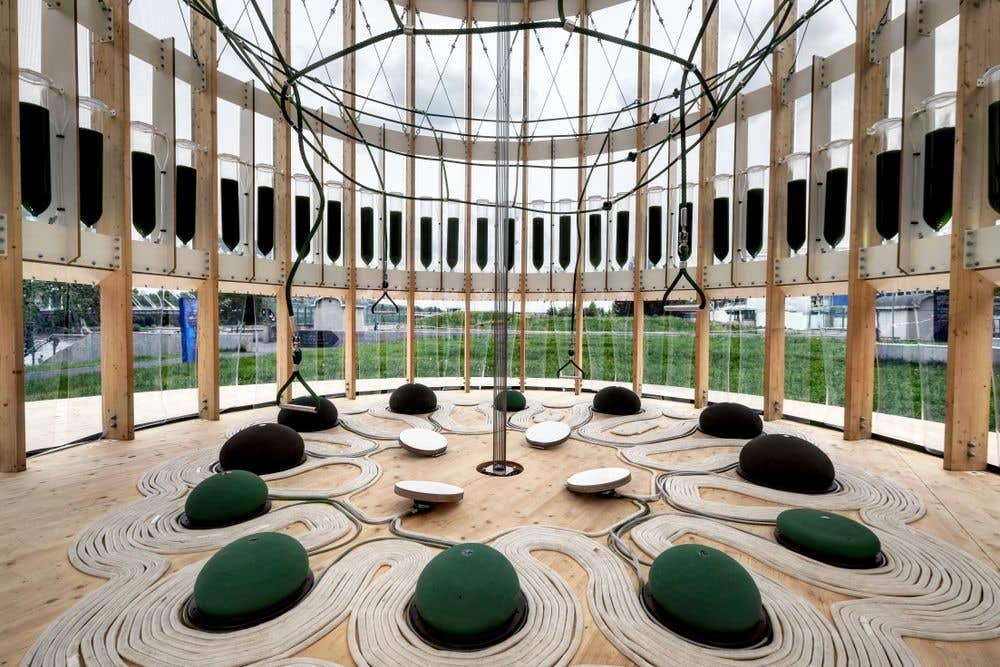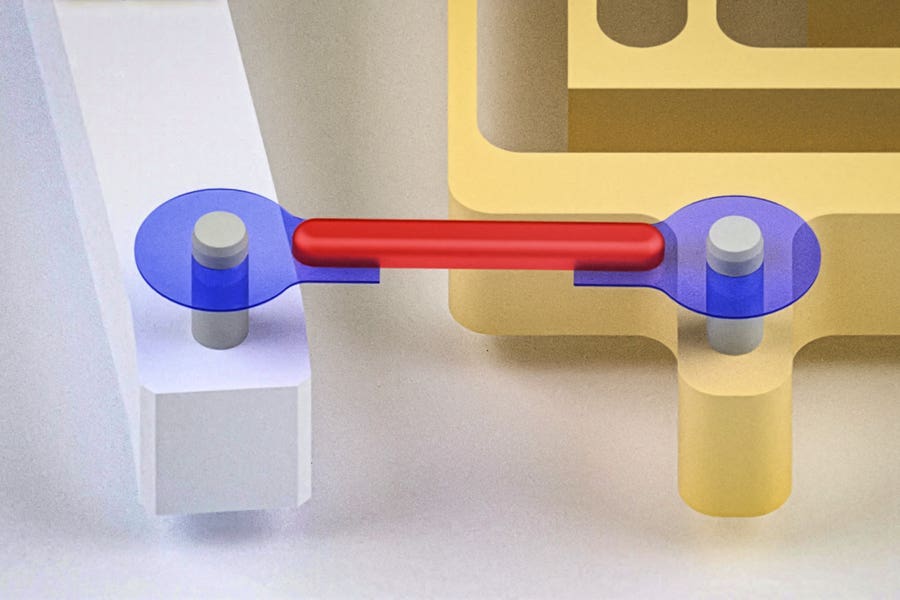Futuristic children’s playground purifies the air powered by kids play
The world’s first biotechnology playground using air-purifying algae has opened at Warsaw’s Copernicus Science Centre.

[Nov 12, 2021: Nick Westerby]
Like many of the interactive exhibits on display at the Copernicus Science Centre, the playground not only serves as a curiosity or transitory experience to be enjoyed and forgotten, but is a thought-provoking installation that could ignite children’s interest to investigate a topic more deeply. (CREDIT: Weronika Rudecka)
The world’s first biotechnology playground using air-purifying algae has opened at Warsaw’s Copernicus Science Centre.
The futuristic looking white and wooden structure was conceived by the team from London based ecoLogicStudio, led by Dr. Marco Poletto and Dr. Claudia Pasquero, following a World Health Organization report saying that 93 percent of children are forced to play in areas with dangerous, polluted air.
Dr. Claudia Pasquero, co-founder of ecoLogicStudio and one of the designers of the project, said: “The playground needs two power sources. One is solar energy and the other is motion.
“Children's play stimulates the work of bioreactors and directly contributes to air purification.”
The interactive playground at Warsaw’s Copernicus Science Centre is stimulated by children playing which sets off the bioreactors and directly contributes to air purification. (CREDIT: Kalbar/TFN)
Related Stories:
The way the playground and project is constructed, it is essential that children interact and play in the area for the algae to flourish.
The space has an intriguing allure to it with dangling handles inviting children to pull and tug on them, soft seat formations to clamber over and winding tracks to follow and encourage fun. (CREDIT: Weronika Rudecka)
The space has an intriguing allure to it with dangling handles inviting children to pull and tug on them, soft seat formations to clamber over and winding tracks to follow and encourage fun.
Like many of the interactive exhibits on display at the Copernicus Science Centre, the playground not only serves as a curiosity or transitory experience to be enjoyed and forgotten, but is a thought-provoking installation that could ignite children’s interest to investigate a topic more deeply.
Designers Dr. Marco Poletto and Dr. Claudia Pasquero came up with the design following a World Health Organization report saying that 93 percent of children are forced to play in areas with dangerous, polluted air. (CREDIT: ecoLogicStudio/Facebook)
Co-designer of the project Dr. Marco Poletto said: “The installation consists of 52 bioreactors. Each of them contains 10 litres of live Chlorella cultures.
“Under ideal conditions, these algae can actively filter and re-metabolize pollutants and carbon dioxide, they can use particles of carbon dioxide and nitrogen oxides as food and increase their biomass.
“Like all plants, they also release oxygen.”
WHO has identified air pollution as the greatest environmental threat to health around the world and as children are the most vulnerable to its long term health impact the idea of creating clean environments they frequent the most such as playgrounds and schools makes sense.
Dr. Wojciech Feleszko, pediatrician and immunologist from the Medical University of Warsaw said: “We recently showed that Polish children in the smog season suffer from diseases of the upper respiratory tract as a result of continuous inhalation of such air.
“High levels of pollution overload the natural mucosa of the nose and lead to long-term health problems.
“For this reason, taking care of the airway is becoming a priority of modern environmental medicine.”
For more environmental news stories check out our Green Impact section at The Brighter Side of News.
Like these kind of feel good stories? Get the Brighter Side of News' newsletter.
Tags: #Green_Good_News, #Global_Good_News, #Playground, #Kids, #Exercise, #Algae, #Clean_Ait, #The_Brighter_Side_of_News



